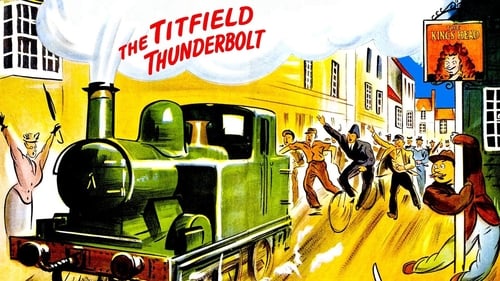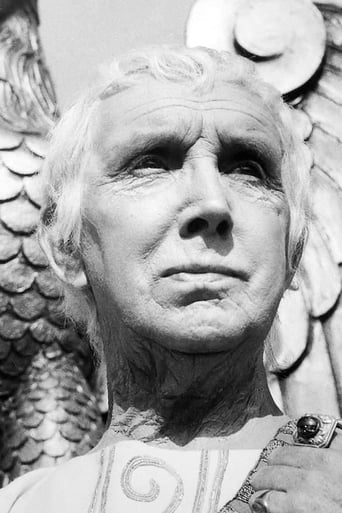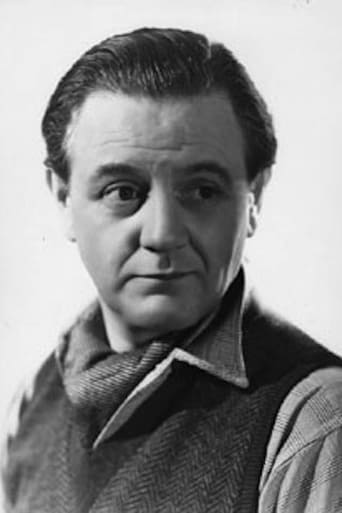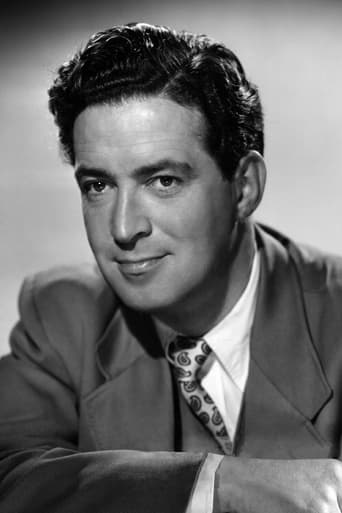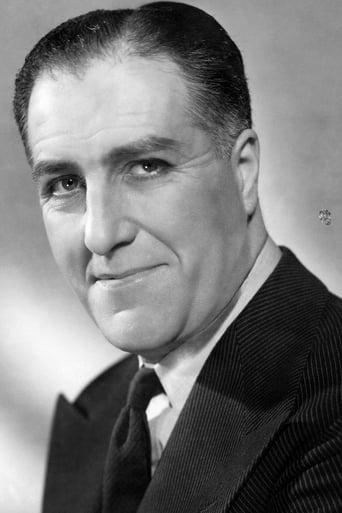Plantiana
Yawn. Poorly Filmed Snooze Fest.
StunnaKrypto
Self-important, over-dramatic, uninspired.
Rio Hayward
All of these films share one commonality, that being a kind of emotional center that humanizes a cast of monsters.
Staci Frederick
Blistering performances.
Thomas Stansfield
What can I say I love steam locomotives and this movie is a recommendation to all the railway enthusiasts. The movie is based upon a little village called Titfield, the local branch line is been forced to close down due to the 1951 modernisation plan by British Railways to close down local branch lines and make way for the bus services. This could be an interesting plot for a Thomas the Tank Engine episode. The movie focuses on the determination of railway preservation in the UK and there are many railways that are preserved in our modern lifestyle to let the younger generation to witness the site of steam locomotion. Plus the scene where the tank engine and the steam roller have a duel on the level crossing is one of my favorites.
bkoganbing
Watching The Titfield Thunderbolt I'm wondering if Paul Henning got the idea for Petticoat Junction from this film. Certainly the folks who wanted to keep that railroad that ran from Hooterville to Pixley were of the same mind that these rural British people had in keeping their railroad line operational.On Petticoat Junction that was a running plot line to keep the Hooterville Cannonball going. Here in Titfield the main transportation with the outside world is that railroad that runs from Titfield to Mallingford and back. The Labour government under Clement Attlee in the new post war Great Britain nationalized their railroads, but a loophole in that law will permit a private company to be organized if they can maintain the railroad up to certain standards.Now that's not sitting too well with folks that have franchised a bus line to be the new transport between Titfield and the wider world. So now we also have the elements of the plot of hundreds of westerns in the USA, the railroad versus the stagecoach. This one's done with a little more style.It's quite a crew of outraged citizens from Titfield that have taken this crusade up for many different motives. They range from the local vicar George Relph to the local squire Stanley Holloway to the local poacher Hugh Griffith. The ingenuity of the locals is really something to see as they overcome many disadvantages and some deliberate sabotage.The cinematography of the British countryside by their ace cameraman Jack Cardiff reminds me of The Quiet Man. Another reminder of The Quiet Man is the presence in the cast of Jack McGowran of the Abbey Theater players. You might not remember the name, but you can never forget McGowran who plays a toady like character here for the bus line in the same manner he was Victor McLaglen's factotum in The Quiet Man. With that squinty face of his, McGowran was born to play parts like that.The Titfield Thunderbolt both as a period satire of some of the problems that the new Socialist Great Britain was undergoing and as a comedic piece with some timeless comedy gags holds up well. It's a great credit to the Ealing Studios and the wonderful humor that they gave the post war United Kingdom and the world.
ackstasis
The Ealing comedies have never looked as wonderful as in 'The Titfield Thunderbolt (1953),' the first from the studio to be filmed in Technicolor. Cinematographer Douglas Slocombe captures the sheer magnificence of the British countryside, every frame alive with the vibrant colours of the hills, the trees and the skies. The film was directed by Charles Crichton, who had earlier achieved success with 'The Lavender Hill Mob (1951),' and was penned by T.E.B. Clarke, who also wrote the outrageously whimsical 'Passport to Pimlico (1949),' encapsulating the wit and optimism of the British sense of humour in a way that typifies why such classic comedy gems are still treasured more than fifty years later. The story was inspired by real events, when local volunteers restored and operated the narrow gauge Talyllyn Railway in Wales.The residents of the small village of Titfield rely daily on trains to commute to work each day; so much so that the steam locomotive has become an icon of the town. However, when British Rail announces the intended closure of the service, the villagers are understandably devastated, and one resident, railway enthusiast Vicar Sam Weech (George Relph), decides to purchase the line and run it locally. Employing the funding of the wealthy and amiably-drunken Walter Valentine (Stanley Holloway), who is easily persuaded by the promise of an early-morning bar on the train, Sam and the other enthusiastic villagers convince the Ministry of Transport to offer them a one month trial, at the end of which their ability to run a train service will be determined. The only two men in town who don't approve of this daring venture are Pearce and Crump (Ewan Roberts and Jack MacGowran), the owners of a bus service, who plan to gain from the closure of the train service, and will try anything to prevent it from running again.'The Titfield Thunderbolt' shares many of its themes with a lot of the other Ealing comedies, most namely the notion of a small community taking on the "Big Guys" {also found in 'Passport to Pimlico' and 'Whisky Galore!'} and the potentially destructive forces of industrial progress {see also 'The Man in the White Suit (1951)'}. The acting is fun and light-hearted, and each of the characters possesses their own eccentricities, which makes them all equally enjoyable to watch. Considering its nature as a comedy, I was surprised to find that the film has some genuine moments of suspense, scenes that would not have seemed out-of-place in a Hitchcock film. I found myself gripping the seat in the sequence where the train passengers must disembark to collect water for the heating engine (after the water-tank is cunningly sabotaged), and also where the weak coupling between the engine and the carriage threatens to snap. The frequent use of rear-projection, which is relatively effective throughout the film, also reminded me of the Master of Suspense. It's an interesting comparison, I think.
James Hitchcock
This was one of only two Ealing comedies to be made in colour, the other being "The Ladykillers" from two years later. Although railways play an important part in both, the two films are very different. "The Ladykillers" is an urban black comedy which was made in dull, muted colours but could equally well have been made in black and white. "The Titfield Thunderbolt", by contrast, is the sort of film that needs to be in colour. It is a joyful comedy, celebrating English rural life, and was shot against the background of beautiful, verdant West Country landscapes in late summer. (The wild flowers in the hedgerows suggest a date rather later than the June/early July when the story is ostensibly set). Appropriately for a film which opened in Coronation year, it has a notably patriotic tone.The theory has been put forward that the Ealing comedies were intended as satires on "Attlee's Britain", the Britain which had come into being after the Labour victory in the 1945 general election. Although Churchill's Conservatives had returned to power by the time "The Titfield Thunderbolt" was made in 1953, I think that the theory still applies to it because the new government accepted many of the reforms made by its predecessor and did not attempt to reverse them. One of the things that Attlee's government had done was to nationalise the railways, and the plot of the film revolves around an attempt by the new, nationalised British Railways to close a branch line between the (fictional) towns of Titfield and Mallingford.A group of local people campaign to prevent the railway from being closed, and, when it becomes clear that BR will not listen to local opinion, decide to take over the line and operate it themselves. The leading lights in this campaign are the local Squire, whose great-grandfather originally built the line, and the eccentric local Vicar, who also acts as engine-driver. (A rascally local poacher is his fireman). The money for the enterprise is provided by a wealthy and hard-drinking landowner, Mr Valentine, whose main motivation is the idea that he can get a drink whenever he wants one. (In the 1950s the law imposed stringent closing-times on licensed premises, but licensing hours did not apply to bars on trains). The best performances come from Stanley Holloway (who also had important roles in "Passport to Pimlico" and "The Lavender Hill Mob") as Valentine, George Relph as the Vicar and Hugh Griffith as Dan the poacher. Those familiar with the "Carry On" films will recognise Sid James as a steamroller driver.Like two other Ealing comedies, "Whisky Galore" and "Passport to Pimlico", this one deals with the theme of a small, close-knit community taking on the forces of bureaucracy. The film's satire, however, is not directed just at the bureaucrats of British Rail and the Ministry of Transport. As in "The Man in the White Suit" there are also satirical digs at the trade unions, portrayed as being more concerned with their own narrow interest than with the wider public good, and at business. The local bus company welcome the closure of the railway, which they see as an opportunity to increase their own profits. Much of the humour in the film derives from the bus company's increasingly frantic efforts to sabotage the railway, and the attempts of the railway enthusiasts to fight back. After their only steam engine is put out of action, they decide that the only way of keeping the railway in operation is to steal a veteran locomotive (the "Thunderbolt" of the title) from the local museum."The Titfield Thunderbolt" was, at one time, often regarded as one of the weaker Ealing comedies. It briefly became topical about a decade later when British Rail, under the chairmanship of Dr Richard Beeching, and with the encouragement of the notoriously pro-road and anti-rail Minister of Transport Ernest Marples, closed many branch lines across the country, but following the "Beeching Axe" and the growth of the "car economy" in the sixties and seventies, it began to look outdated. Enthusiasm for steam trains was seen as mere sentimental nostalgia. Today, however, the film looks very different in the light of modern concerns about global warming, congestion and the loss of countryside to the motorway network. There is a growing desire for local, community-based solutions to local problems. A film which once seemed like a reactionary fantasy of a Merrie England which never existed now seems far-seeing. Contrary to what Beeching and Marples might have thought, public transport, including the railways, still has an important part to play in the twenty-first century. "The Titfield Thunderbolt" is not just one of the most amusing of the Ealing series. It might also turn out to be one of the most prophetic. 9/10

